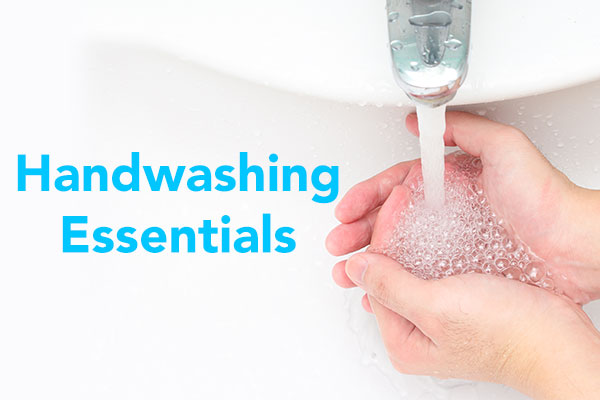
One of the most effective measures to protect yourself from infectious diseases such as the flu is hand washing, which aids in the removal of germs from your hands.
The skin protects the body against harmful things in the environment like chemicals and germs. While the skin is extremely effective at keeping germs out, places like our nose, mouth, or eyes are much less effective barriers and are common sites where many germs gain access to the body. Hands are the most exposed part of the body to germs and these germs are transferred to the body after touching the eyes, nose and mouth. Every single day we touch many different surfaces that are covered with germs. Germs are pathogens that can cause illness and some of them can live on surfaces from minutes to days. With all of these dirty surfaces in our daily life, regular and frequent hand washing is one of the best defences against getting sick.
People should always wash their hands after going to the washroom or changing a diaper, before and after eating, after coughing or sneezing into their hands, before and after caring for someone who is ill or has open wounds, after touching animals, after touching commonly touched surfaces like door knobs, menus, money and after touching garbage and dirty surfaces.
How important is proper hand washing?
Handwashing helps keep people healthy and reduces the spread of germs to you and others around you. It’s been shown to decrease respiratory and diarrheal related illnesses. Proper hand washing can prevent 1 in 3 diarrhea related illnesses, and 1 in 5 respiratory illnesses(5).
How to wash your hands:
Proper handwashing with soap is incredibly easy and convenient and the following simple steps are recommended:
- Wet hands with warm clean water.
- Apply SOAP to cover all hand surfaces and lather thoroughly.
- SCRUB palms, fingers, spaces between fingers, backs of hands and wrists. You should scrub for at least 15 seconds to properly wash your hands, but cleaning for 30 seconds is even better.
- RINSE hands under running clean water.
- DRY hands thoroughly by patting with a paper or single-use towel. Use the towel to turn off the tap.
Cleaning with hand sanitizer works almost as well, when water and soap aren’t available. Hand sanitizer kills bacteria on the surface of the skin. Although it can be used for almost any situation that hand washing would be important, it is not effective in removing dirt or chemicals.
To properly wash your hands with hand sanitizer:
- Apply enough hand sanitizer in the palm of one hand, enough to be able to cover all hand surfaces.
- Rub all surfaces of hands and wrists. Rub fingertips and thumbs.
- Rub until hands are completely dry.
Sources:
- Ejemot RI, Ehiri JE, Meremikwu MM, Critchley JA. Hand washing for preventing diarrhoea. Cochrane Database Syst Rev. 2008;1:CD004265.
- Aiello AE, Coulborn RM, Perez V, Larson EL. Effect of hand hygiene on infectious disease risk in the community setting: a meta-analysis. Am J Public Health. 2008;98(8):1372-81.
- Huang DB, Zhou J. Effect of intensive handwashing in the prevention of diarrhoeal illness among patients with AIDS: a randomized controlled study. J Med Microbiol. 2007;56(5):659-63.
- Rabie T and Curtis V. Handwashing and risk of respiratory infections: a quantitative systematic review.Trop Med Int Health. 2006 Mar;11(3):258-67.
- Centers for Disease Control and Prevention. Hand Washing at Home, at Play, and Out and About. Hand Washing at Home, at Play, and Out and About, CDC, October 6 2017.
- Alberta Health. Clean Hands…It’s what we ALL do, Alberta Health Services, 2016.
- U.S Food and Drug Association. Antibacterial Soap? You Can Skip It, Use Plain Soap and Water. FDA, October 6, 2017
- Infection Prevention and Control Canada. “Hand Hygiene Resources.” IPAC, 2017